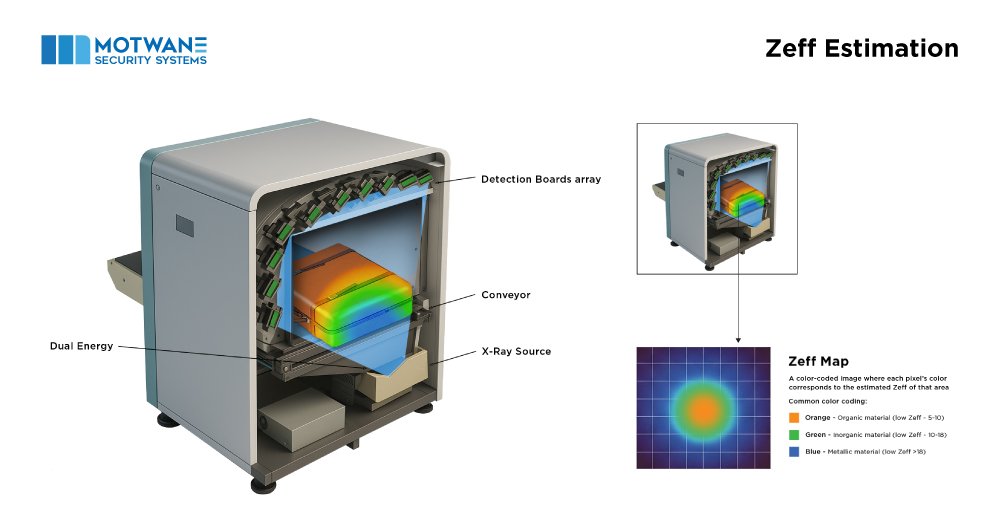Zeff estimation in X-ray baggage scanners refers to the estimation of the effective atomic number of a material in the scanned object. This is a crucial part of dual-energy X-ray imaging used to differentiate between organic, inorganic, and metallic substances—and to identify explosives, drugs, and threat materials.
🔍 What is Zeff (Effective Atomic Number)?
- Zeff is the weighted average atomic number that reflects how a compound or material attenuates X-rays.
- It helps determine the material composition:
- Low Zeff: Organic materials (e.g., paper, plastic, explosives)
- Medium Zeff: Inorganics (e.g., glass, ceramics)
- High Zeff: Metals (e.g., guns, knives, batteries)
How is Zeff Estimated in Baggage Scanners?
- Dual-Energy X-ray Imaging:
- Two X-ray spectra (low and high energy) are used.
- Each material attenuates these energies differently based on its atomic structure.
- Attenuation Measurement:
- The scanner records the transmitted X-ray intensities at both energies.
- The difference in attenuation between low and high energy X-rays depends on the material’s Zeff.
- Algorithmic Estimation:
- The system compares the attenuation ratios to a calibrated reference model.
- Mathematical models (e.g., logarithmic ratio method or polynomial fitting) then estimate Zeff for each pixel or region.
- Color Mapping:
- Materials are assigned colors based on estimated Zeff:
- Orange for organic (Zeff ≈ 6–10)
- Green/Blue for inorganics/metals (Zeff ≈ 11–30+)
🧠 Why is Zeff Estimation Important?
- Threat Detection: Helps identify explosives (which are organic with specific Zeff range)
- Material Classification: Allows operators to visually distinguish items
- Automation: Enables machine learning-based auto-detection systems to flag threats
A scanner detects an unknown item in a bag. The system computes:
- Attenuation at 80 keV (low energy)
- Attenuation at 160 keV (high energy)
- From the ratio, it estimates Zeff ≈ 7 → classifies it as organic → flags for further
Contact us for a demo – X-ray baggage scanners




